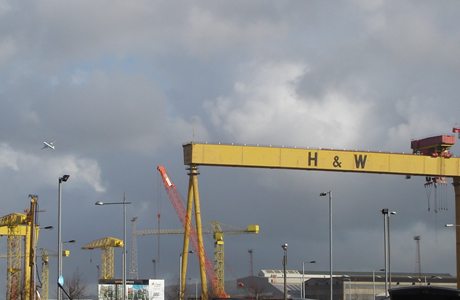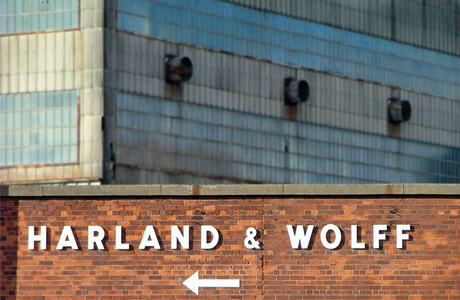Harland and Wolff
Between 1900 and 1930, Harland and Wolff was Belfast's biggest employer by a long way. Thousands of people worked in the ship yards and demand for ocean liners was huge.
Although ships are still built in Harland and Wolff today, the number of ships and people actually employed is much less than in the hay day of the early 20th century.
The Harland and Wolff shipyard was founded in 1862[1]. It was founded by Edward James Harland and Gustav Wilhelm Wolff[2]. At its height, Harland and Wolff and the ship yard in Belfast became one of the biggest ship builders in the world. Harland and Wolff own the world's largest dry dock, which is in Belfast[3].
Harland Wolff constructed over 70 ships for the White Star Line. The Titanic was the best known of these.
A prominent feature of the Belfast skyline is the Harland and Wolff cranes, Samson and Goliath. When people think of Harland and Wolff and Belfast, the image of the cranes is usually the first thing that comes to mind, after the Titanic. The crane Samson was built in 1974 and the crane Goliath in 1969[4].
References
- Tim Lambert, A BRIEF HISTORY OF BELFAST, BELFAST IN THE 19th CENTURY. Available [online] from: http://www.localhistories.org/belfast.html [Accessed 24 February 2007].
- Wikipedia, Early history, Harland and Wolff. Available [online] from: http://en.wikipedia.org/wiki/Harland_and_Wolfe [Accessed 24 February 2007].
- Wikipedia, Early history, Harland and Wolff. Available [online] from: http://en.wikipedia.org/wiki/Harland_and_Wolfe [Accessed 24 February 2007].
- Wikipedia, Post war period and decline, Harland and Wolff. Available [online] from: http://en.wikipedia.org/wiki/Harland_and_Wolfe [Accessed 24 February 2007].

